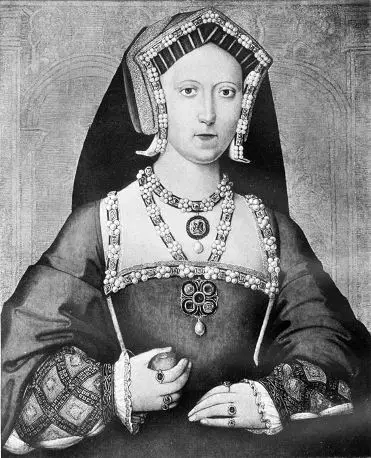 On this day in history, 18th March 1554, Palm Sunday, the twenty-year-old Lady Elizabeth (future Elizabeth I) was taken to the Tower of London, the place where her mother had been imprisoned and executed in 1536.
On this day in history, 18th March 1554, Palm Sunday, the twenty-year-old Lady Elizabeth (future Elizabeth I) was taken to the Tower of London, the place where her mother had been imprisoned and executed in 1536.
We can only imagine the sheer terror she felt when Mary I's council turned up at her doorstep on the 16th March 1554 to formally charge her with being involved in Wyatt's Rebellion, the revolt which had taken place in January and February 1554 and which had been led by Sir Thomas Wyatt the Younger. Elizabeth was told that Mary wanted her sister taken to the Tower for questioning and that she would be escorted there the next day.
On the 17th March 1554, two of Mary I's councillors, the Marquess of Winchester and the Earl of Sussex, arrived to escort Elizabeth to her prison by water. This was when Elizabeth wrote what David Starkey calls "the letter of her life", the famous Tide Letter, so-called because as Elizabeth wrote this letter to her sister the tide turned, making it impossible to take Elizabeth to the Tower that day. Elizabeth's delaying tactics gave her a few more hours at home but the words of her letter fell on deaf ears, Mary was determined to see her sister taken to the Tower and interrogated.
On Palm Sunday, Elizabeth was taken from Whitehall to the Tower of London by boat, along the Thames. According to "The Miraculous Preservation of the Lady Elizabeth, now Queen of England", a tract which was added to John Foxe's famous "Book of Martyrs" ( or "Acts and Monuments"), when the boat landed at Traitor's Gate Elizabeth refused to budge and when she finally did get up and get out of the boat she said: "Here landeth as true a subject, being prisoner, as ever landed at these stairs." Wonderful words but, as David Starkey points out, Elizabeth did not enter the Tower through Traitors Gate, instead, she was taken to Tower Wharf.
Although "The Miraculous Preservation" refers to Elizabeth's prison as a "dungeon" and some books and websites state that Elizabeth was imprisoned in the Bell Tower, Starkey writes of how Elizabeth was imprisoned in the royal palace in the inner ward of the Tower of London, the palace which had been renovated by her father, Henry VIII, for her mother Anne Boleyn's coronation but also the place where her mother had been imprisoned before her execution. Elizabeth may well have had luxurious accommodation and around a dozen servants, but she was a prisoner and must have felt that she was surely going to end her days in the Tower just like her mother, executed as a traitor.
On Good Friday, Elizabeth was interrogated by the Queen's council. Wyatt had refused to implicate Elizabeth in his plot so the council were hoping that Elizabeth would break and provide them with the evidence they needed to get rid of her, Elizabeth did not, she kept her wits about her.
Wyatt was executed on the 11th April 1554 and instead of implicating Elizabeth he gave a rousing speech proclaiming her innocence. Wyatt's execution must have shaken Elizabeth to the core but still, she would not admit her guilt. There was no firm evidence against her and she was the daughter of the country's beloved Bluff King Hal, there was likely to be trouble if Elizabeth was put on trial. Starkey writes of how Mary's council "bickered and debated" over Elizabeth and Mary herself "dithered". Mary must have been concerned about the threat which Elizabeth posed but Elizabeth was her half-sister, her flesh and blood.As a result of all of this uncertainty, Elizabeth was granted more freedom and, although still a prisoner, was permitted to walk in the palace's privy garden. The story in "The Miraculous Preservation" of a boy bringing flowers to Elizabeth and Elizabeth's fellow prisoner trying to communicate with her through this boy (the son of an officer of the Tower) is actually true as it is confirmed in a report by Simon Renard to the Queen. I love the way this true story is used in the novel "Virgin and the Crab" by Robert Parry as John Dee's way of communicating with Elizabeth through the flowers, using the meanings of the flowers which he once taught her to make messages - wonderful! Elizabeth was also permitted to walk in the great gallery and this extra "freedom" must have given Elizabeth hope that Mary was going to release her and spare her life. Did she dare hope?
Elizabeth's hopes were dashed when the new Constable of the Tower, Sir Henry Bedingfield, was ordered on the 4th May 1554 to raise a hundred troops. Elizabeth must have been truly terrified to see all of these new guards - surely this meant that she was going to be executed and that these guards were for crowd control. However, Mary had decided to release her sister from the Tower and place her under house arrest. On the 19th May, the anniversary of her mother's execution, Elizabeth was escorted from the Tower and taken by water to Richmond.
Was Elizabeth relieved and happy? No. Starkey writes of how that night at Richmond was "one of the most disturbed nights of her life" because Elizabeth was convinced that she was going to be assassinated. "For this night, I think to die" is what she told her gentleman usher and I can understand her feeling this way - it would be convenient for Mary if Elizabeth was dispatched by an intruder, something that Mary could not be held accountable for.
After an awful night at Richmond, Elizabeth was taken to Woodstock in Oxfordshire, a journey which took 4 days and a journey which showed Elizabeth's popularity as people lined the streets to see her and her litter became laden with gifts. It was at Woodstock that she was going to be put under house arrest and carefully watched, it was not really freedom, was it? Elizabeth was quite aware of this and, in a message to her servants, she referred to a verse from St Matthew's Gospel: "Behold, I send you forth as sheep in the midst of wolves; be ye therefore wise as serpents, and harmless as doves." Elizabeth knew that both she and her servants would have to keep their wits about them if they were to survive, her enemies would be watching.
Sources
Based on a post from The Elizabeth Files by Claire Ridgway.
- "Elizabeth" by David Starkey
- "Virgin and the Crab" by Robert Parry




Although it may have been frightening for Elizabeth or anyone going to the Tower, as her mother had been executed there, plus during this period you didn’t normally emerge alive, in reality Mary did the right thing. Elizabeth was implicated in a serious conspiracy to overthrow and kill her half sister, Queen Mary, so to be fair she had to take action. Mary needed to investigate allegations that Elizabeth knew about the Wyatt plot and had been contacted by his messages. In the end there was no firm evidence, although Elizabeth’s involvement has been debated by historians, but it was only after several weeks of questioning that Mary was convinced to reduce her sisters sentence to house arrest. It was only after a year that she was allowed to return to Hatfield. Mary never trusted Elizabeth after this, but there is no evidence that she felt any bitterness towards Elizabeth or mistreated her before this plot. Royal siblings were often nothing more than rivals for the throne and Mary had already been set aside by her loving brother, Edward, for Lady Jane Grey. Mary was not the first monarch to arrest or even execute a sibling, full or half and would not be the last. Brothers had gone to war over the early division of crown inheritance. William the Conqueror had feuding, murdering sons, as did Henry ii. Edward iv tried and privately killed his troublesome brother George, Duke of Clarence, who had rebelled twice before. Mary, herself had probably narrowly escaped trial and execution by her own father because she reluctantly submitted to his will. Mary Queen of Scots was beheaded by Elizabeth after a series of alleged failed plots and I am sure we can find numerous other examples in wider history. Unfortunately, uncomfortable as it might be to read about sisters or brothers at each other’s throats, when you are responsible for the peace and safety of the Kingdom then you will do the anything to protect yourself and your crown and country.
Mary was in a no win situation and probably had no choice. She was under threat, her throne and person under attack, there had been a violent and serious rebellion by supporters of Elizabeth and her life was under threat. Evidence or at least compelling information came to Mary and she was convinced that Elizabeth at least knew about the conspiracy. Elizabeth was able to convince Mary and the Council that she knew nothing, that she was innocent, but at the time of arrest, none of this was certain. Looking back from 500 years in the future it’s difficult to judge the urgency of this situation. Elizabeth was afraid and uncertain, but she also collected her thoughts to take advantage of a delay in the tide. Her letter is fearful but honest and well phrased. Mary too must have experienced doubt, fear and dread. Uncertainty about the truth, urgency, the demands to act, being torn about what to believe….all these emotions came into being. These were dark days for both Elizabeth and Mary. I cannot condemn Mary for acting with urgency in the name of her own preservation…but that also dosent prevent me for feeling for Elizabeth as well…a prisoner with the fear of death hanging over her. No wonder she was ill with worry and stress. Feigned or real? Elizabeth may have been of an anxious temperament. Anxiety and stress can make you very ill….especially under these terrifying circumstances.